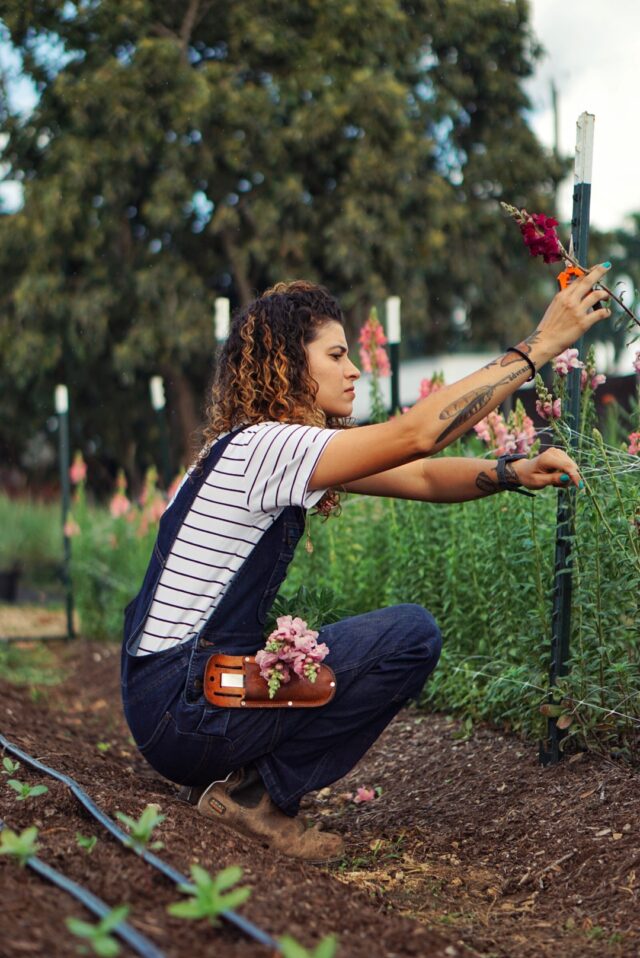My name is Tasha Trujillo and I am the owner and operator of Palm Pike, a second-year flower farm located in Miami, Florida. We specialize in growing flowers using both organic and regenerative practices to protect pollinators and our community from pesticides. Restoring the health of our soil through cover cropping and organic amendments is a priority so that we can sequester carbon and be part of the solution to climate change.

I came to farming by an unconventional path. I used to work at a science museum in Florida where I was deeply moved by our pollinator exhibit. In 2017, I began Palm Pike as an apiary. After studying sustainability at Florida International University, I wanted to expand my work to help save honeybees and other pollinators. So in 2021, I transitioned from beekeeping to flower farming on a 3,000 square foot field. I like to say that the flowers swallowed me whole.
We’ve experienced many difficulties in trying to receive funding to support our work at Palm Pike. After months of trying to reach someone at our local Farm Service Agency (FSA) office, we had no luck in acquiring a Direct Farm Ownership loan to secure our land tenure. Once we did finally get in touch with an FSA officer, we were informed that we couldn’t get pre-approved for Direct Farm Ownership loans and that we would need to find a property first before starting the loan process.Without an opportunity for pre-approval on the loan it feels almost impossible for us to secure land in Southern Florida, where farmland is being developed into housing at a very fast rate, and $500,000 feels like the minimum price-of-entry for five acres.
These barriers accessing federal support prevent many young farmers like me from building successful businesses. We hear about farming being a “dying profession,” but most USDA programs are geared towards large, established farms and don’t have young farmers in mind. I hope to grow Palm Pike a little more every year until I reach my goal of farming five acres. Once we reach that scale, I would like to expand into education by hosting workshops and trainings at our farm to teach others about beekeeping, gardening for pollinators, and growing your own cut flowers. But in order to reach that scale, I need credit from USDA for operating expenses and support to purchase my farmland. Five acres of farmland in Miami-Dade County is currently selling in the $500,000-$1 million range, and farmers are being outbid by developers.
Without support from institutions like the USDA, land tenure, regenerative agriculture as a career and livelihood feels out of reach for young farmers like me. This sort of farming is exactly what our soil and pollinators need, and the USDA should invest in the young people who are motivated to do this work.